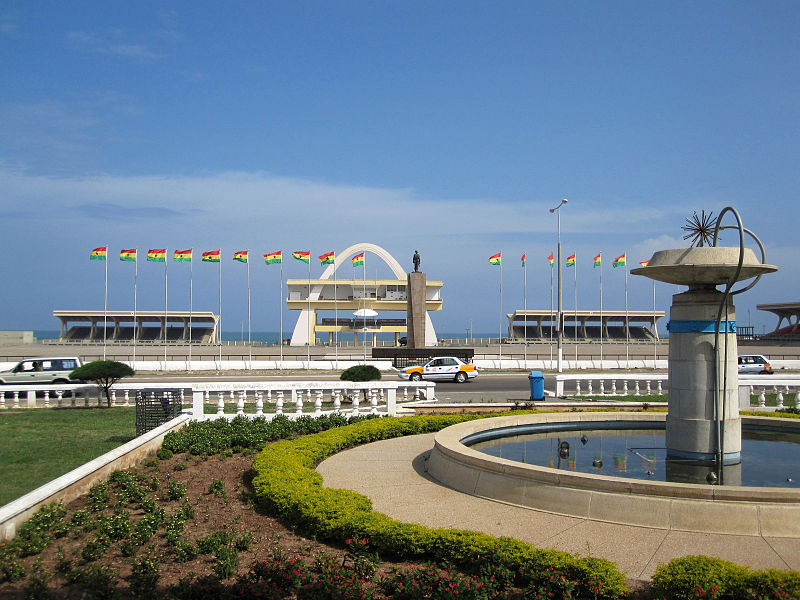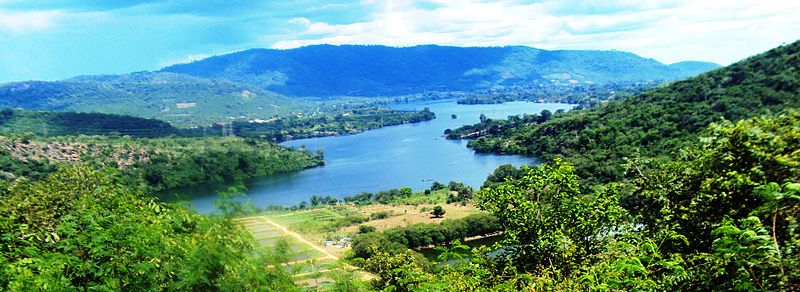Ghana and its Resources


Ghana is a country of West Africa region. It has an area of 238533 sq.km. The water bodies cover an area of 11000 sq.km. The capital of Ghana is Accra. As per 2014 estimates the population of Ghana is 27 million. The population density is 101.5 per sq.km. English is the official language of Ghana. Other languages spoken by the people are Akan, Ewa, Ga, Dagbani, Nzemza and Hausa. The religion followed by the people is Christianity, Islam and local religion. The life expectancy for male is 64 years and for female is 68 years. The neighbors of Ghana are Burkina Faso in north, Cote de Ivories in west, Togo in east and the gulf of Guinea in the south. The currency of Ghana is Cedi. Major exports of Ghana are gold, bauxite, alumina, diamond, manganese, timber and cocoa. The economy of Ghana is growing fast. It is the 6th largest economy of Africa.
Ghana is located to the north of Equator. Due to closer to Equator, the climate is tropical and warm in nature. Ghana has a coastline of 560 km. The rainfall is heavy during the rainy season. The southern, central and northern part gets relatively less rain fall. The coastal part has dense forests. The central and southern parts are covered by shrubs, grass lands and patchy forests. The northern part is covered by dry and thorny species. The vegetation is scanty in nature. The coastal part is having some virgin and dense vegetation with home to varieties of wild life. Volta is the largest river of Ghana. The river formed a lake in the low lying region. It is also called Lake Volta. It is in the southern part of Ghana. It is a large fresh water lake.
The country is divided into some administrative regions. These are Ashanti region, Brong-Ahafo region, Central region, Eastern region, Great Accra region, Northern region, Upper East region, Upper West region, Volta region, and Western region. Kumasi is the capital of Ashanti region. Sunyani is the capital of Brong-Ahafo region. Cape coast is the capital of Central region. Koforidua is the capital of Eastern region. Accra is the national capital of Ghana and headquarters of Great Accra region. Tamale is the capital; of Northern region. Bolgatanga is the capital of Upper East region. Wa is the capital of Upper West region. Ho is the capital of Volta region. Sekondi-Takoradi is the capital of Western region. Ghana developed its export and import activities through two ports. These are Tema port and Takoradi port. These two ports are controlled and operated by the Ghana Ports and Harbor Authority. Important cities and economic centres are Kumasi, Accra, Sekondi-Takoradi, Tamale, Sunyani, Cape Coast, Obuashi, Koforidua, Tema and Techiman.

Ghana is the title given to the kings of Ghana Empire. Its meaning is warrior. The ancient Ghana Empire was much larger to the area of Ghana of present day. The area was extended to Mauritania, Mali, and Senegal. Record of human civilization is found in the Bronze Age locations in Ghana. The ancient empire of Ghana became weak by 1076 AD. The Almoravid general Abu Bakr Ibn Umar conquered Ghana Empire. The Akan Kingdom was established in the south and central part of Ghana during medieval period.The Ashanti Kingdom, the Akwamu Kingdom, the Bonoman Kingdom, the Denkyira Kingdom and the Mankessim Kingdom rules different parts of Ghana in the past. The Ashanti Kingdom was strong and powerful. It ruled in the southern and central part with its capital at Kumasi. The Ashanti Kingdom had a strong bureaucracy and armed forces. It has a strong economy based on gold and metal trade. The Bonoman Kingdom was established in the Brong-Ahato region. The Denkyira rule was there in the central region. The Akwamu rule was there in eastern and Accra region. The Mole-Dagbani rule was there in the northern part of Ghana. The capital was Gambaga. The Mole-Dagombags came from Burkinafaso region. The Mole-Dagombani kingdom divided into smaller states as Dagbon, Manprugu, Mossi and Wala.